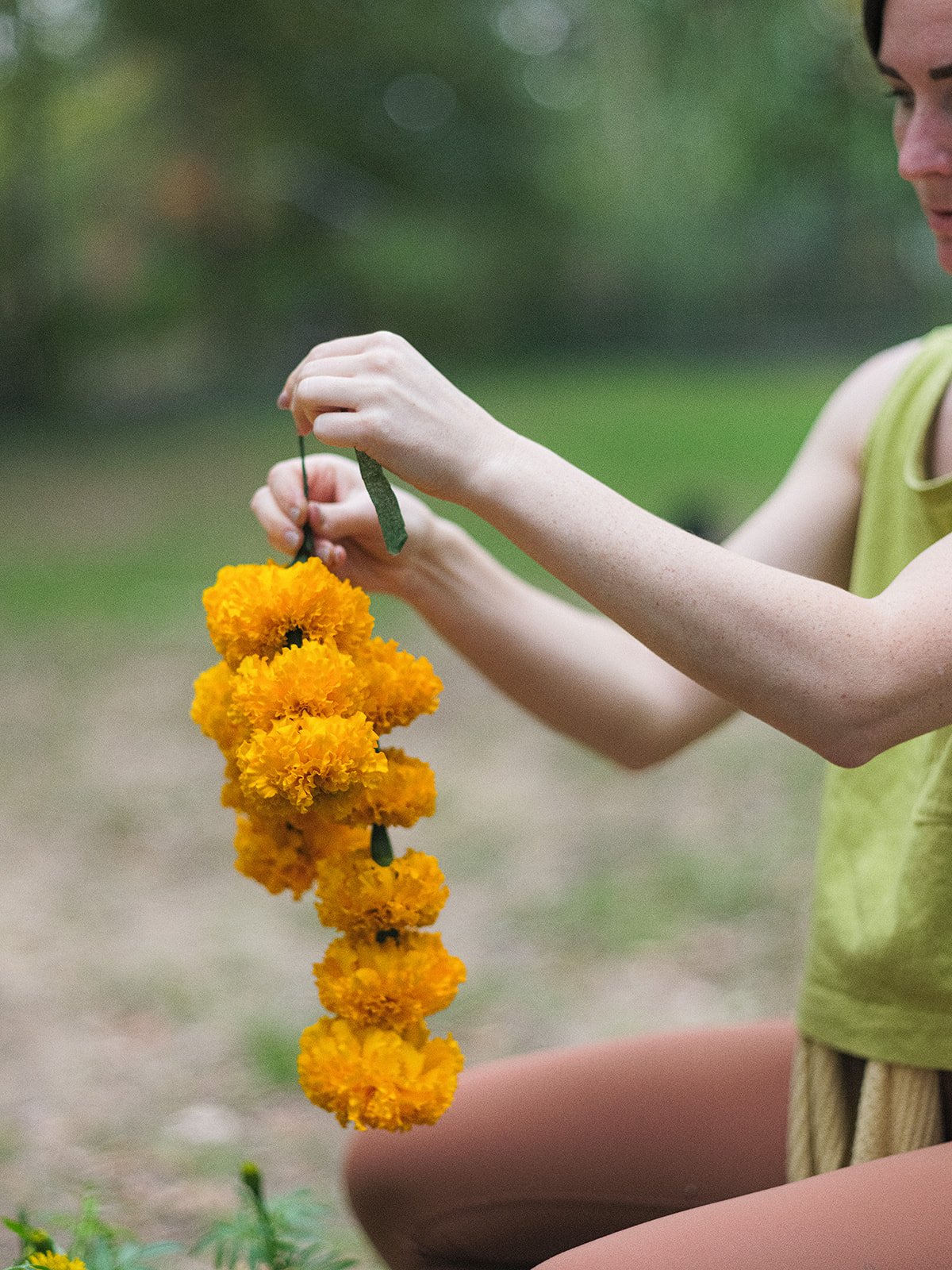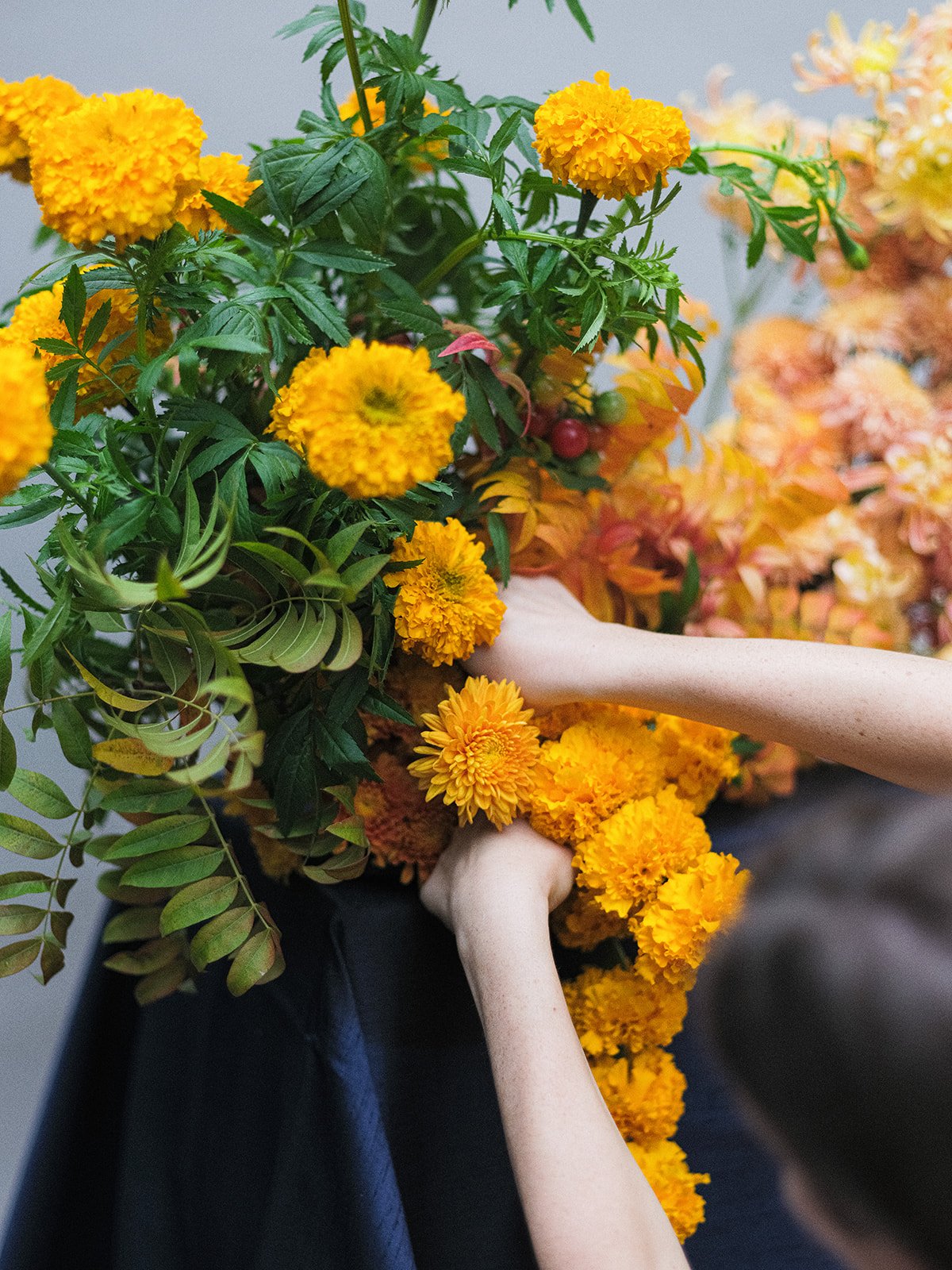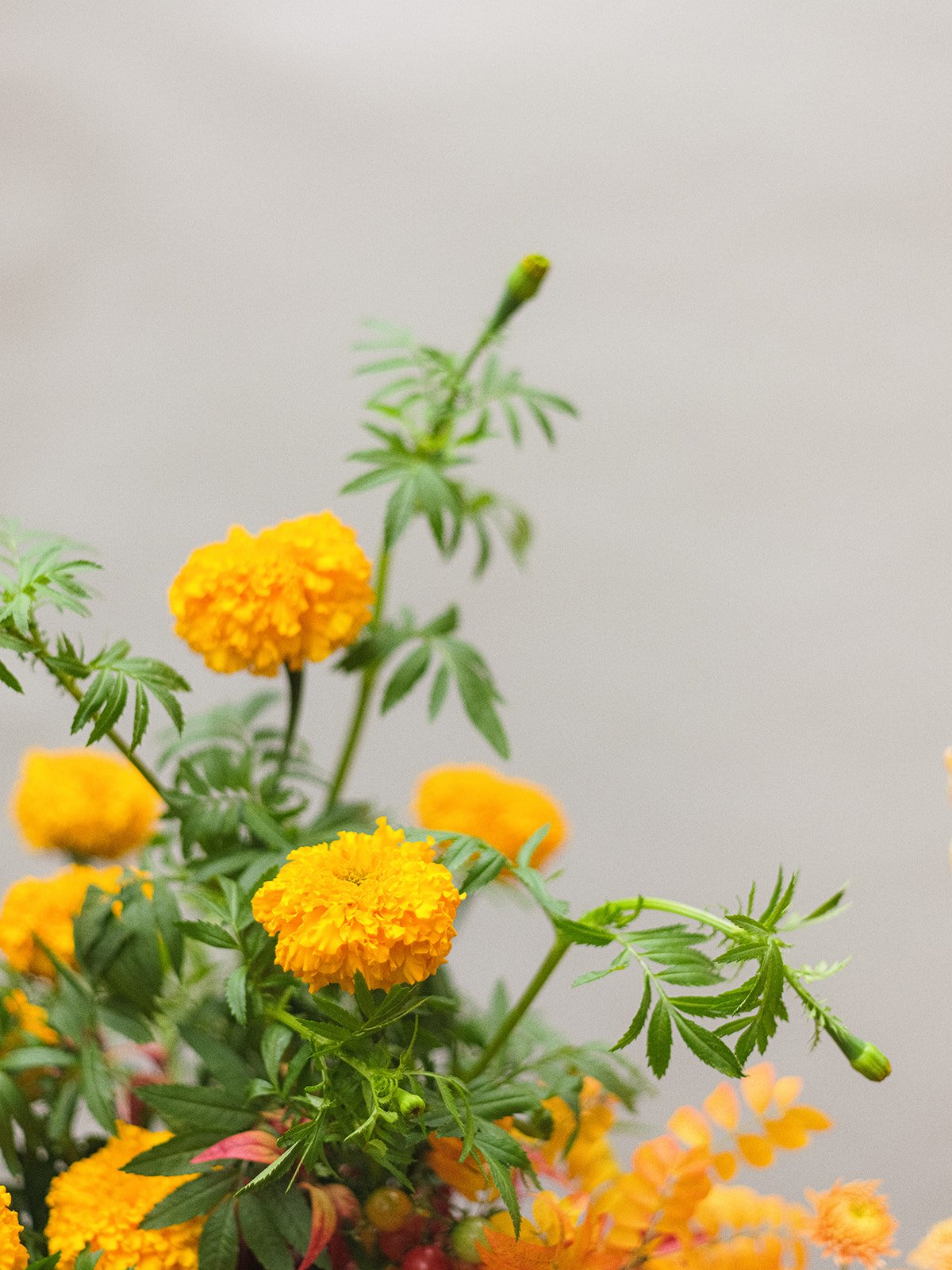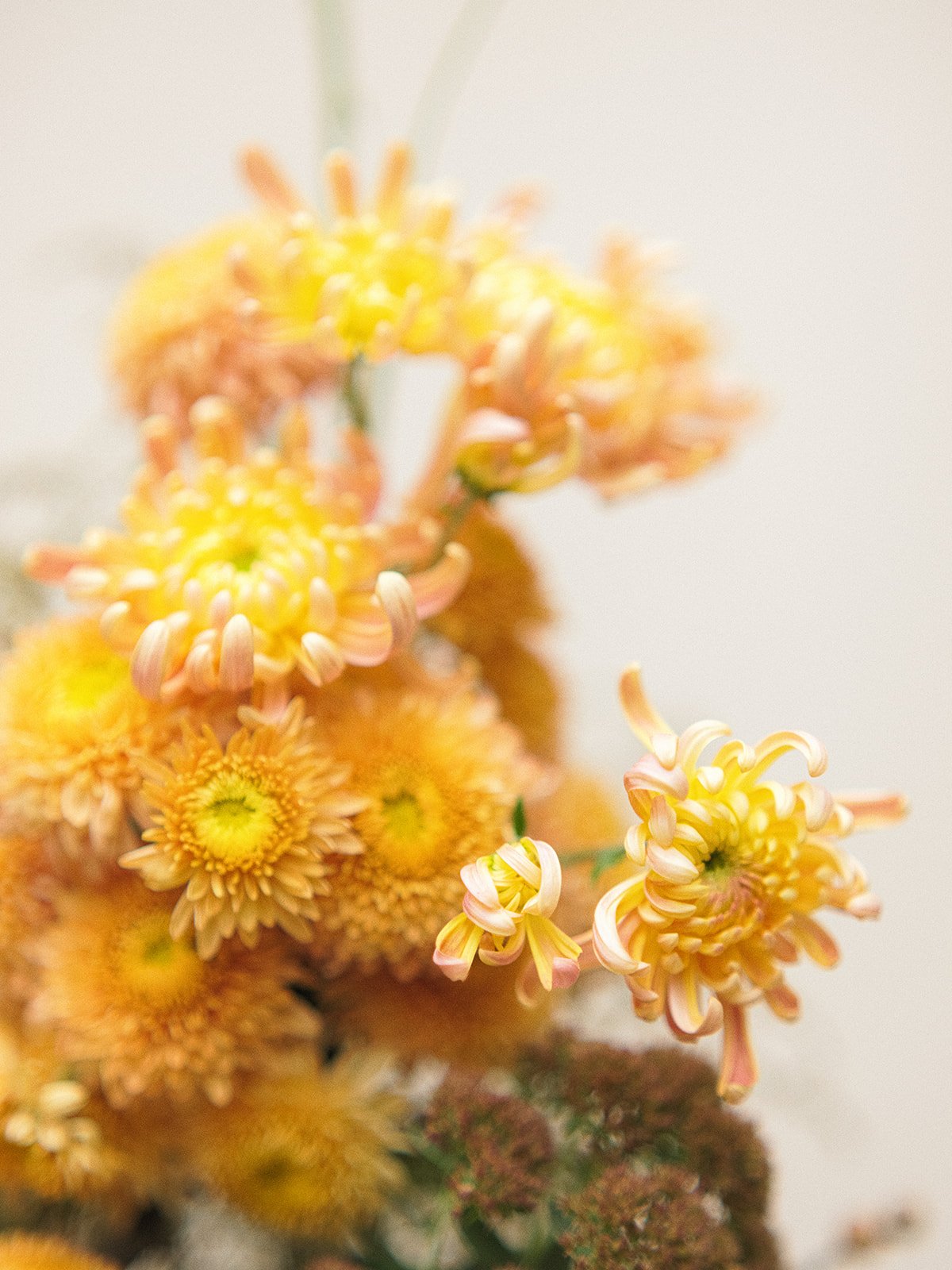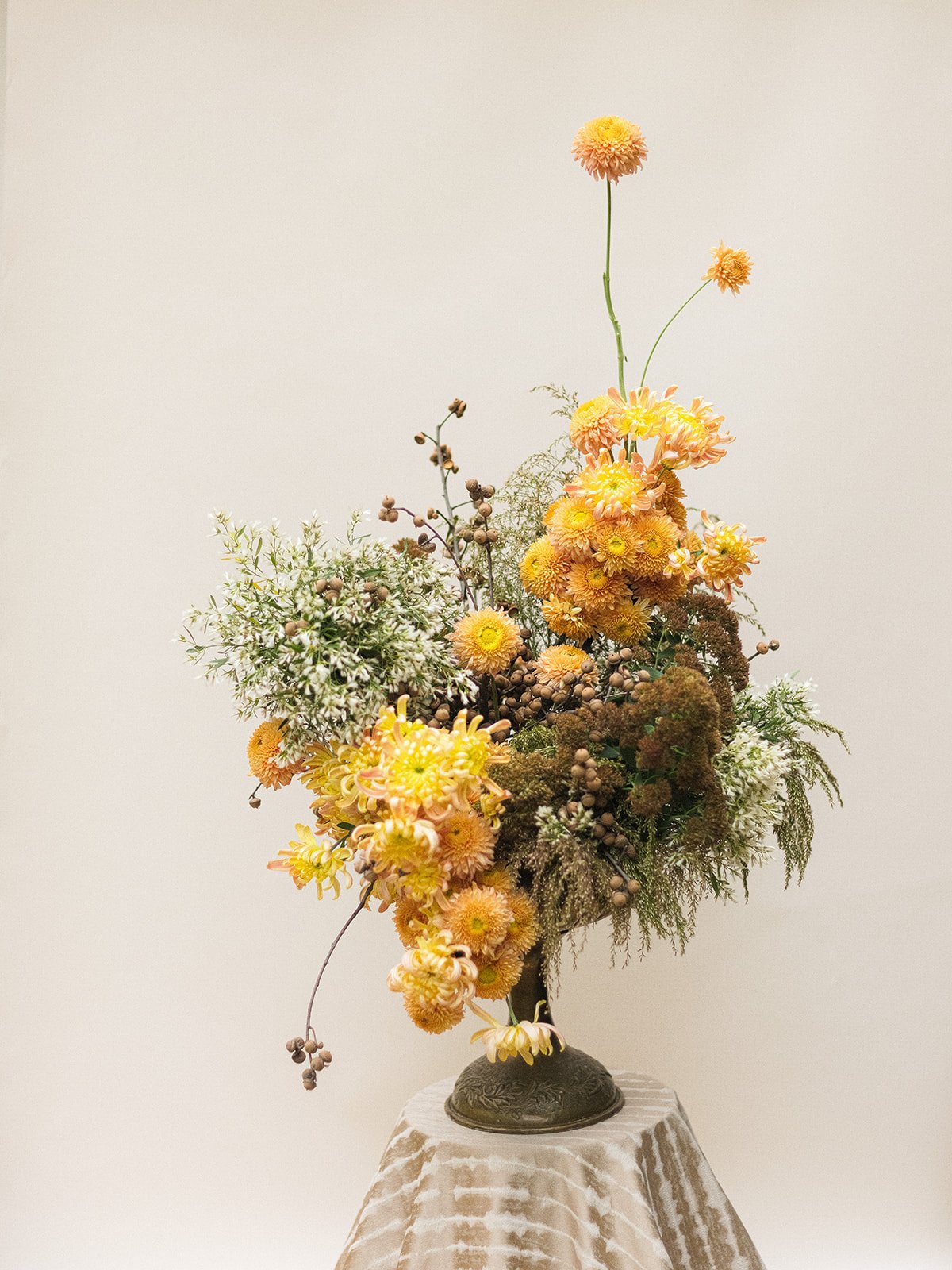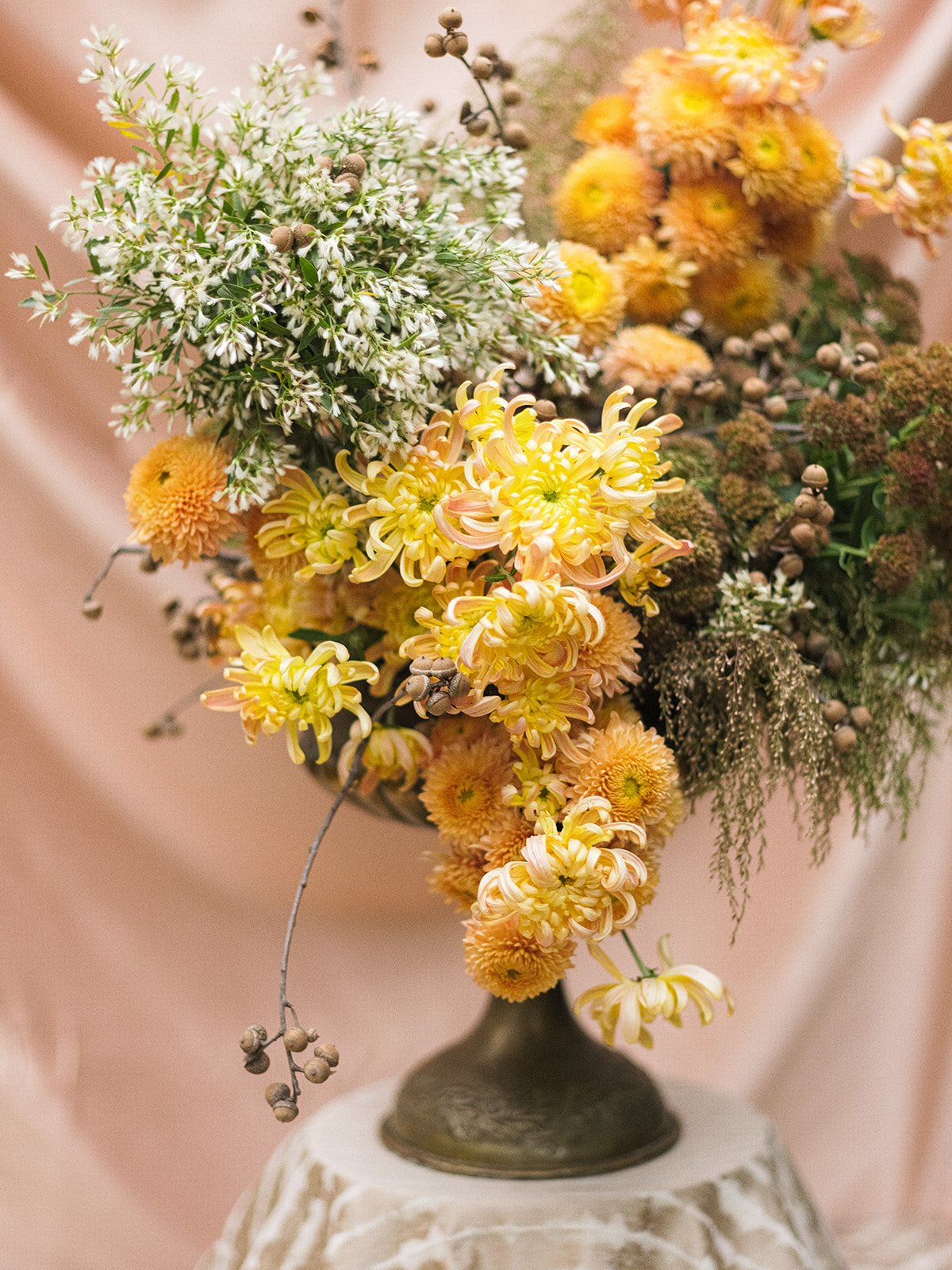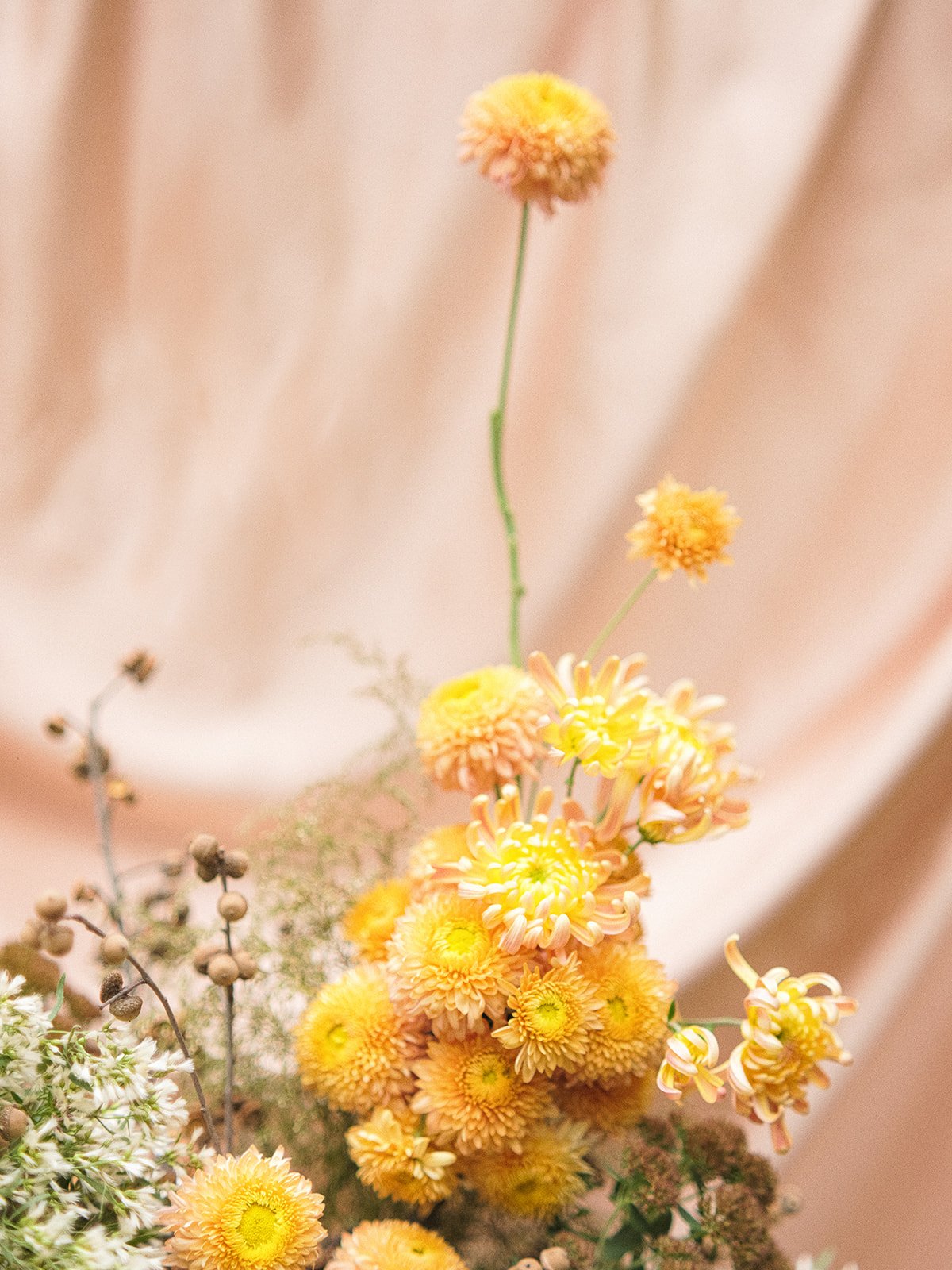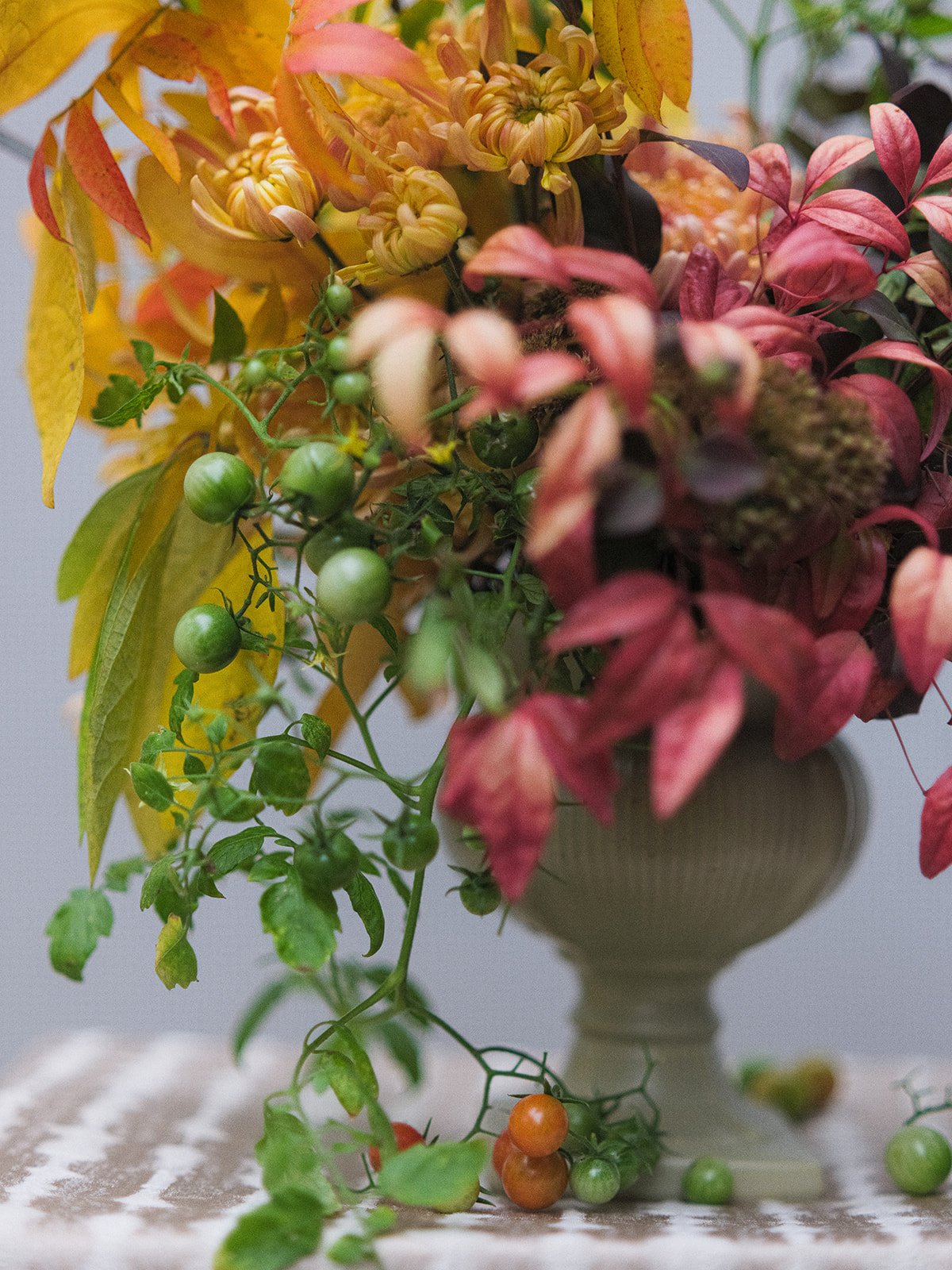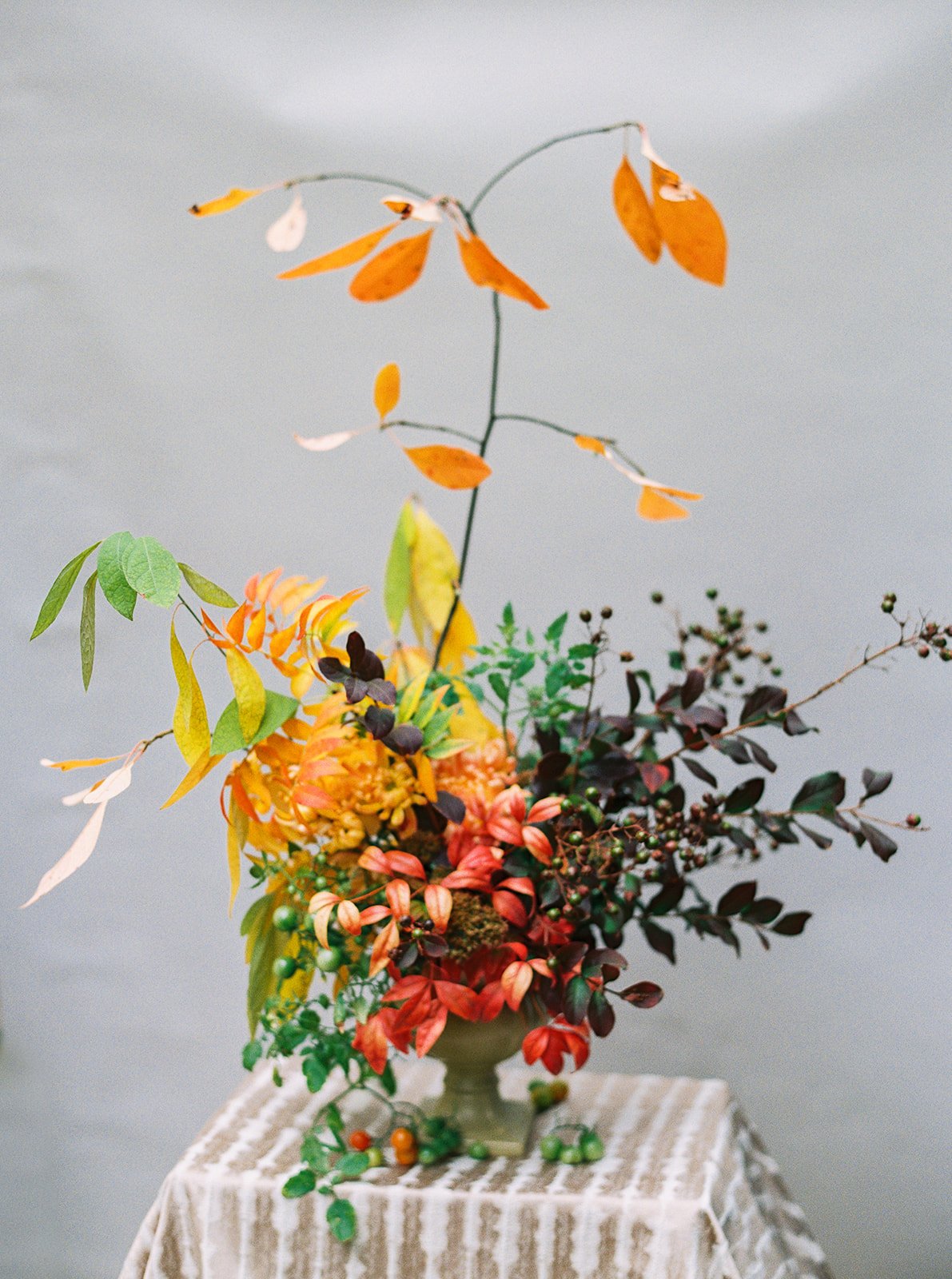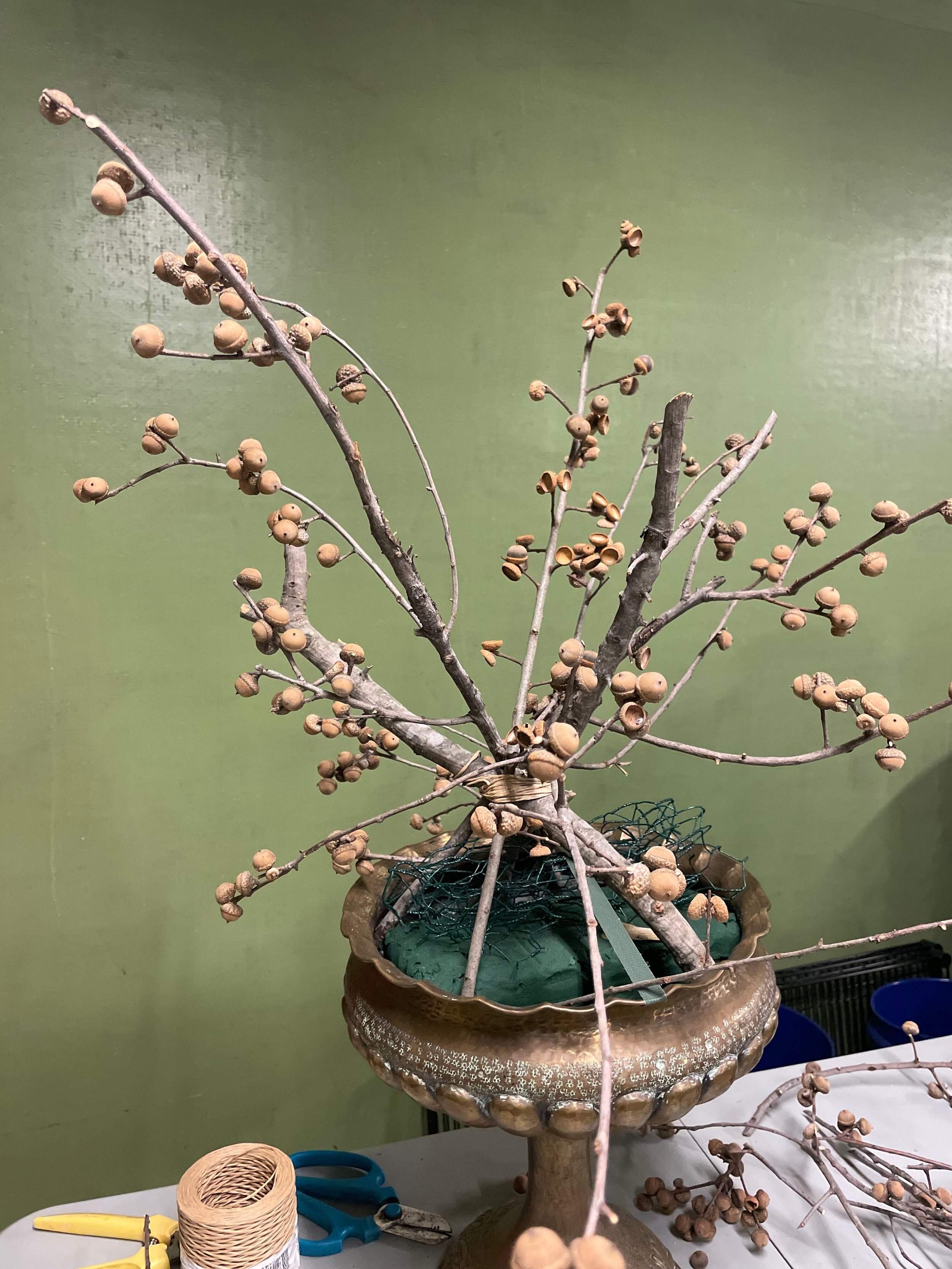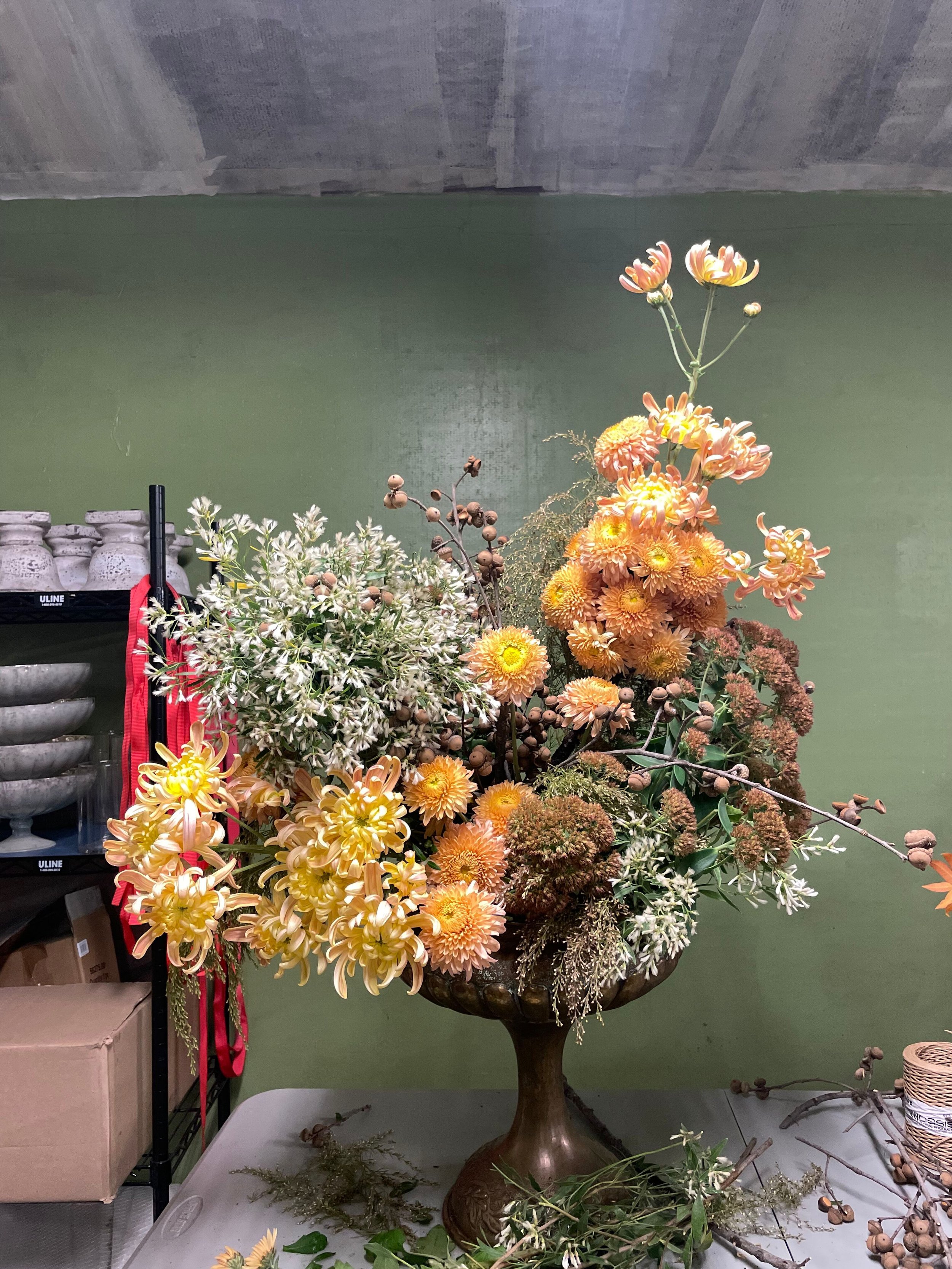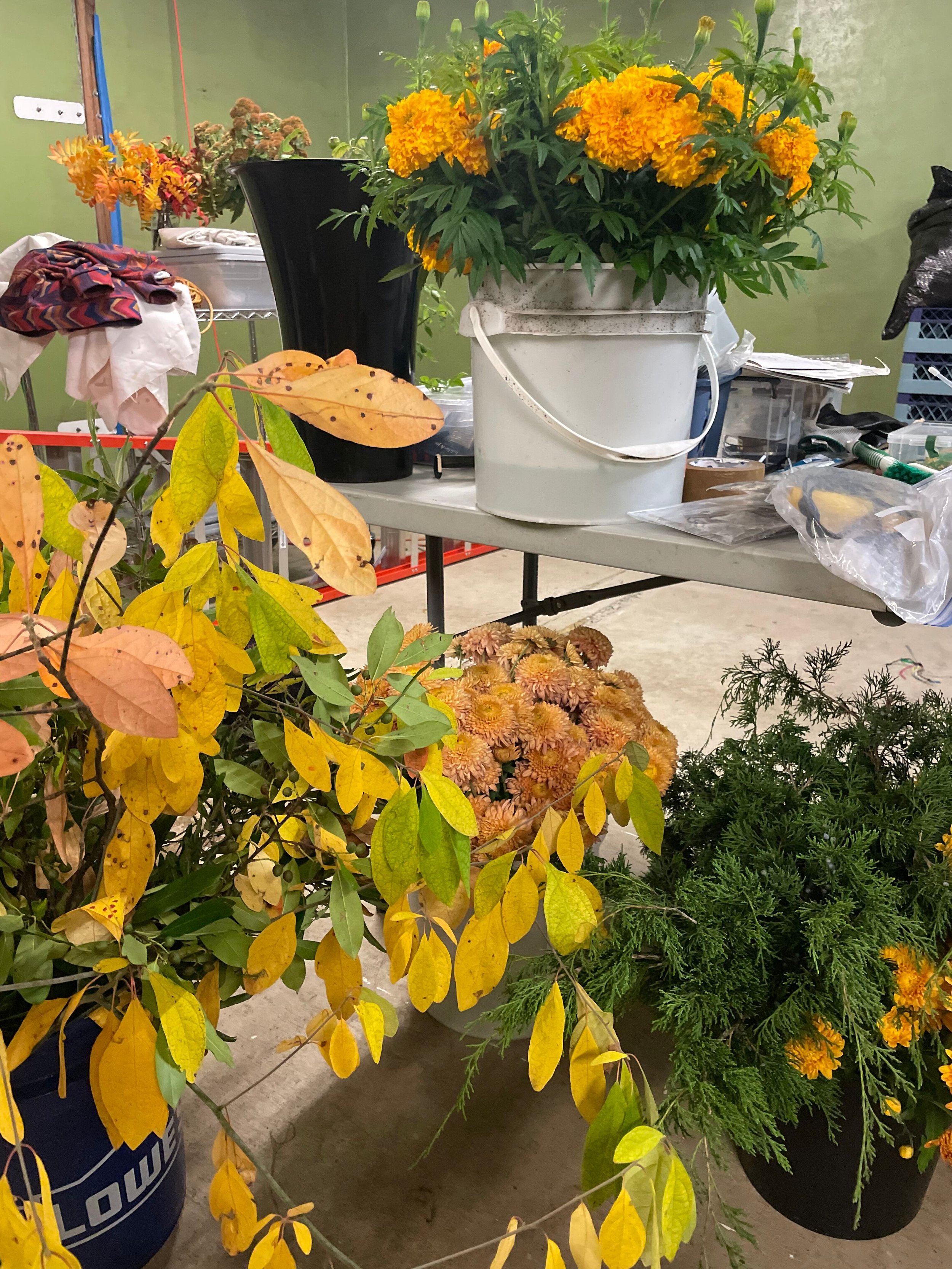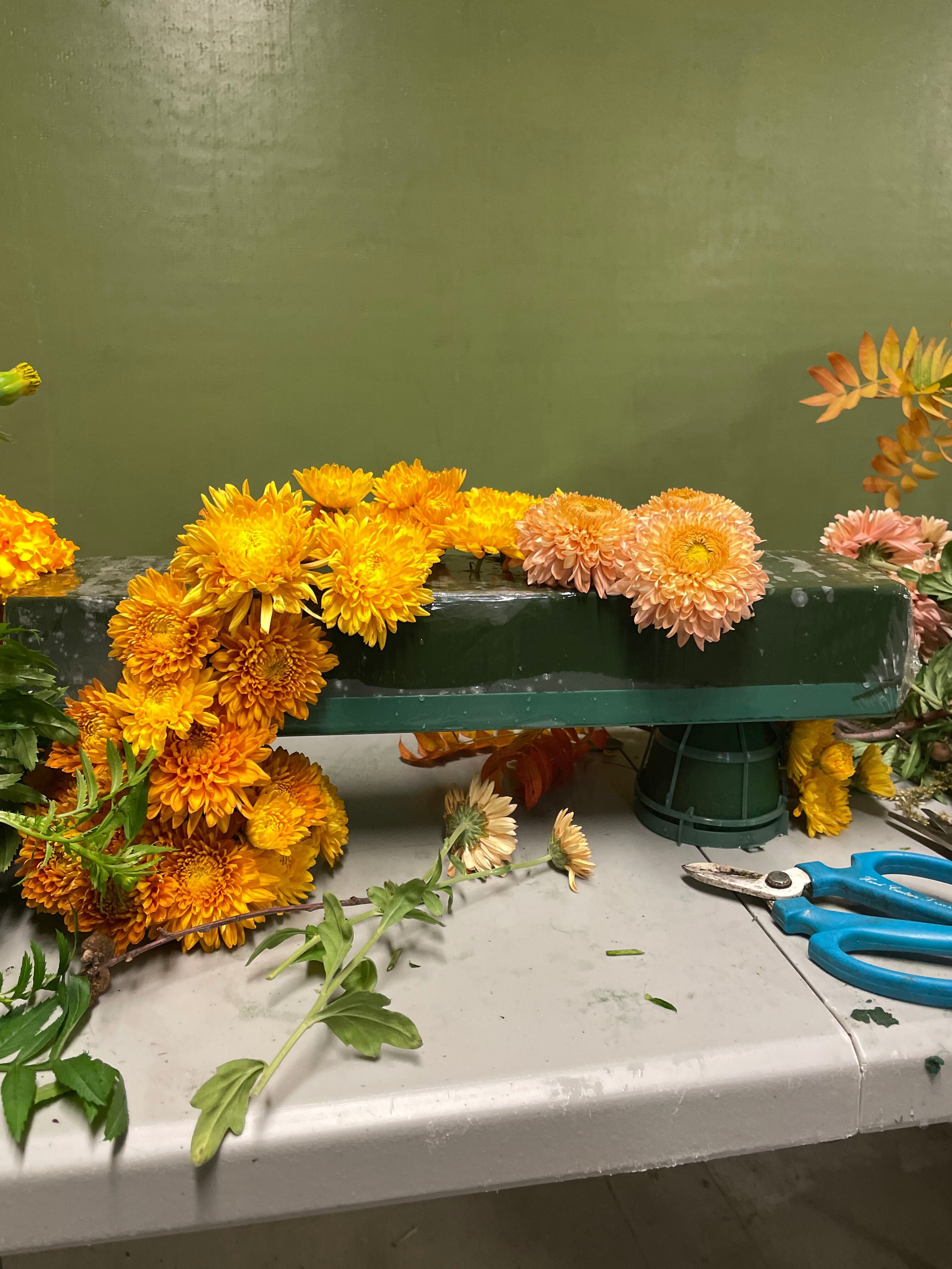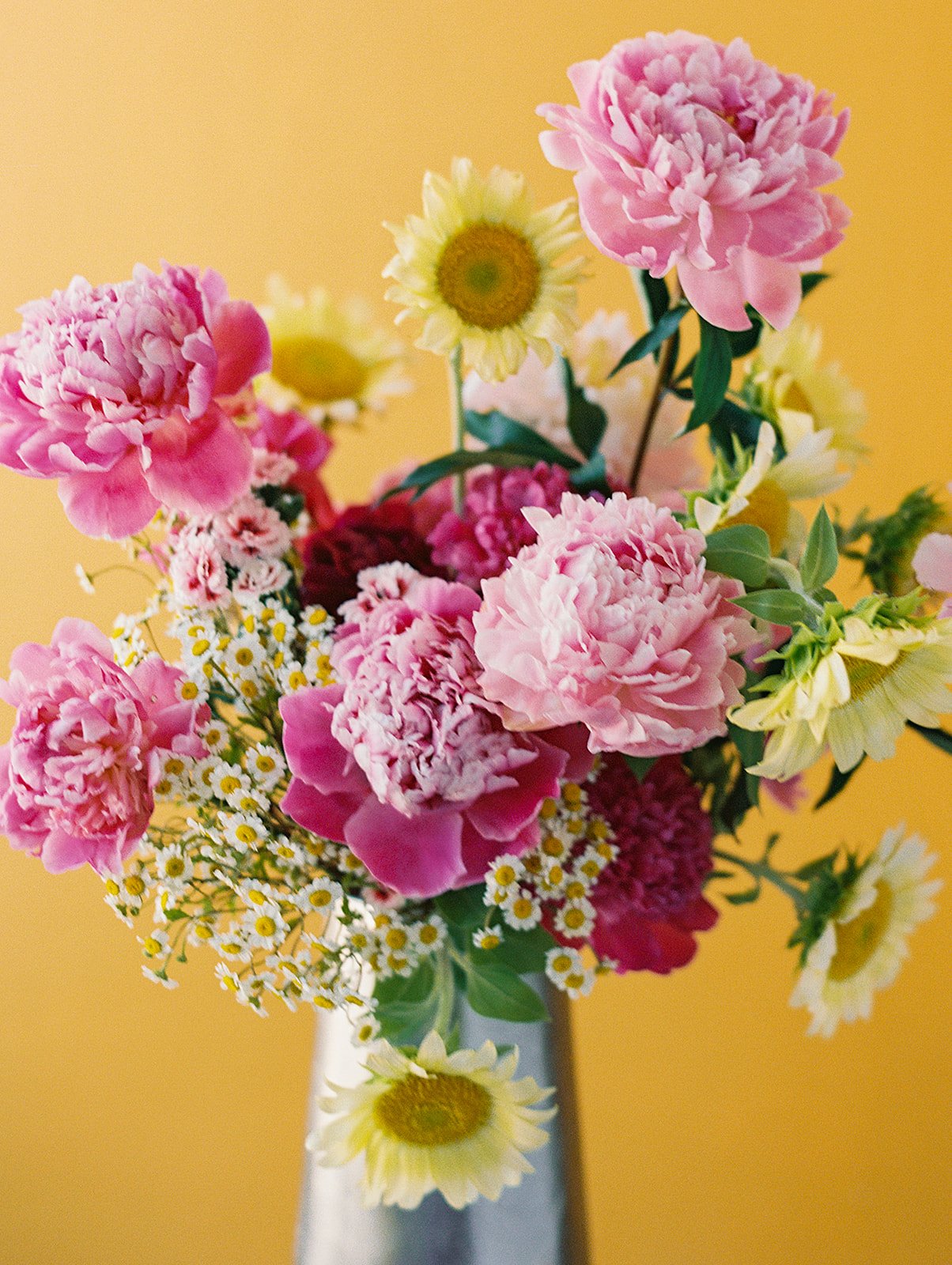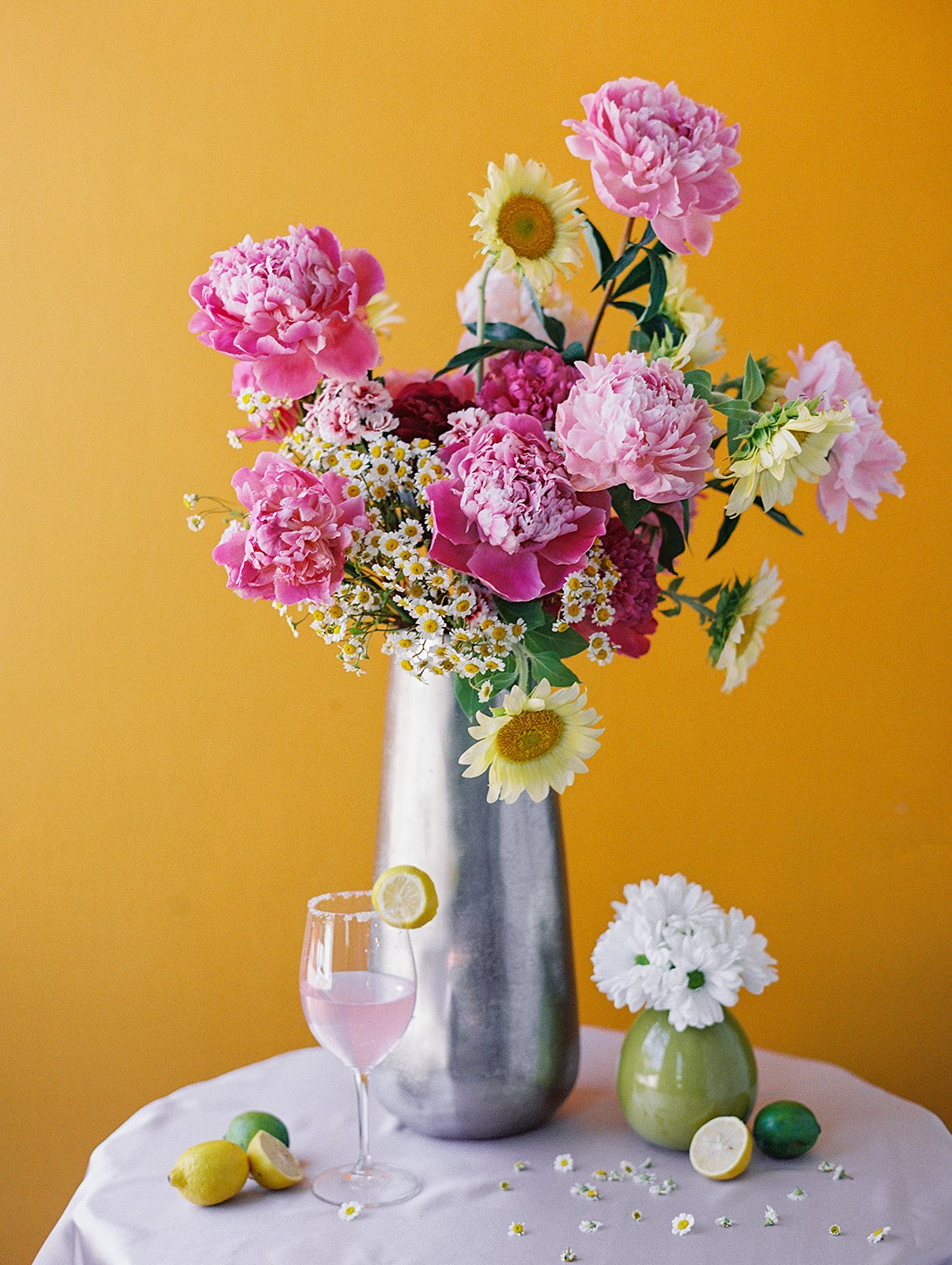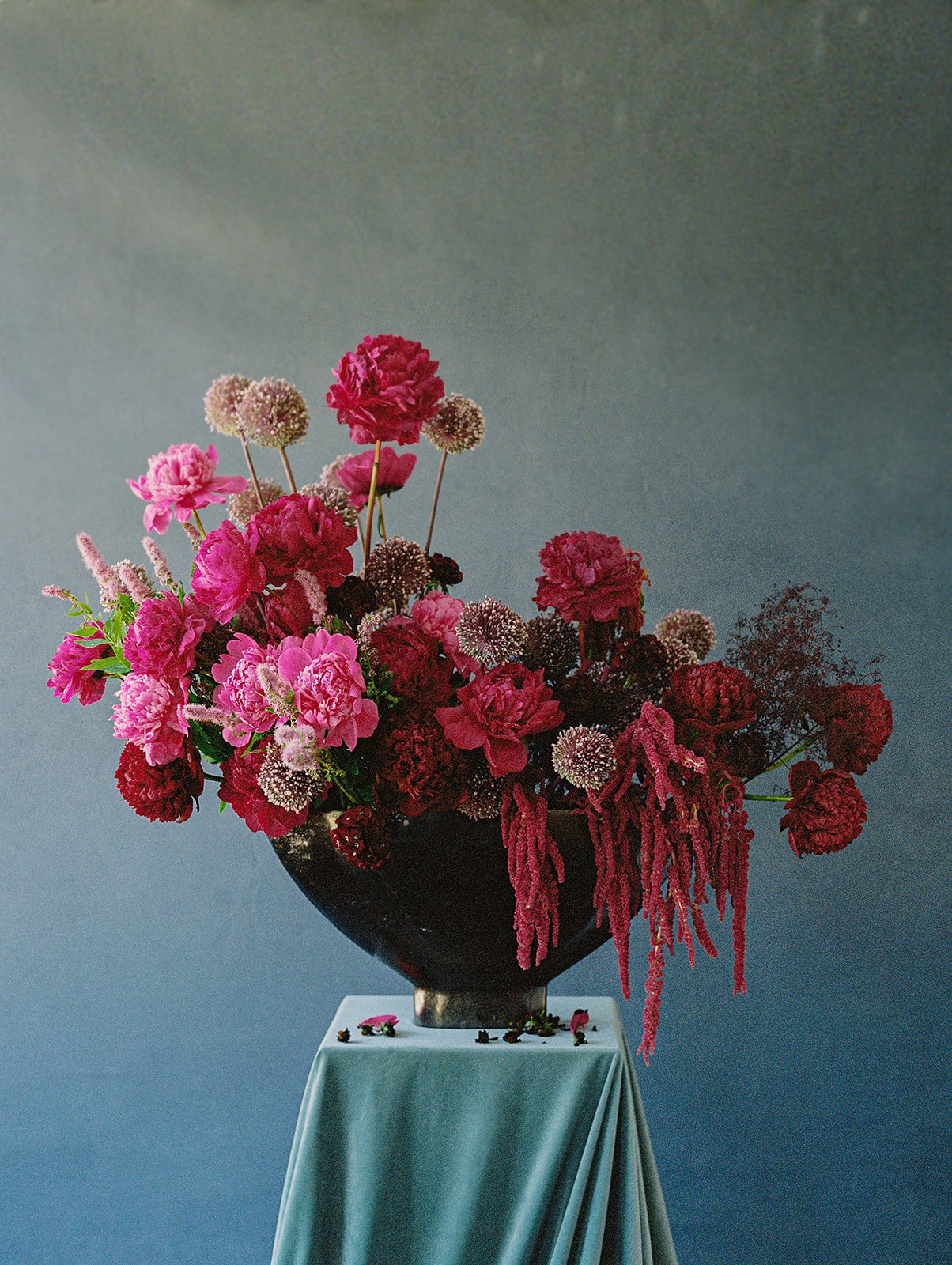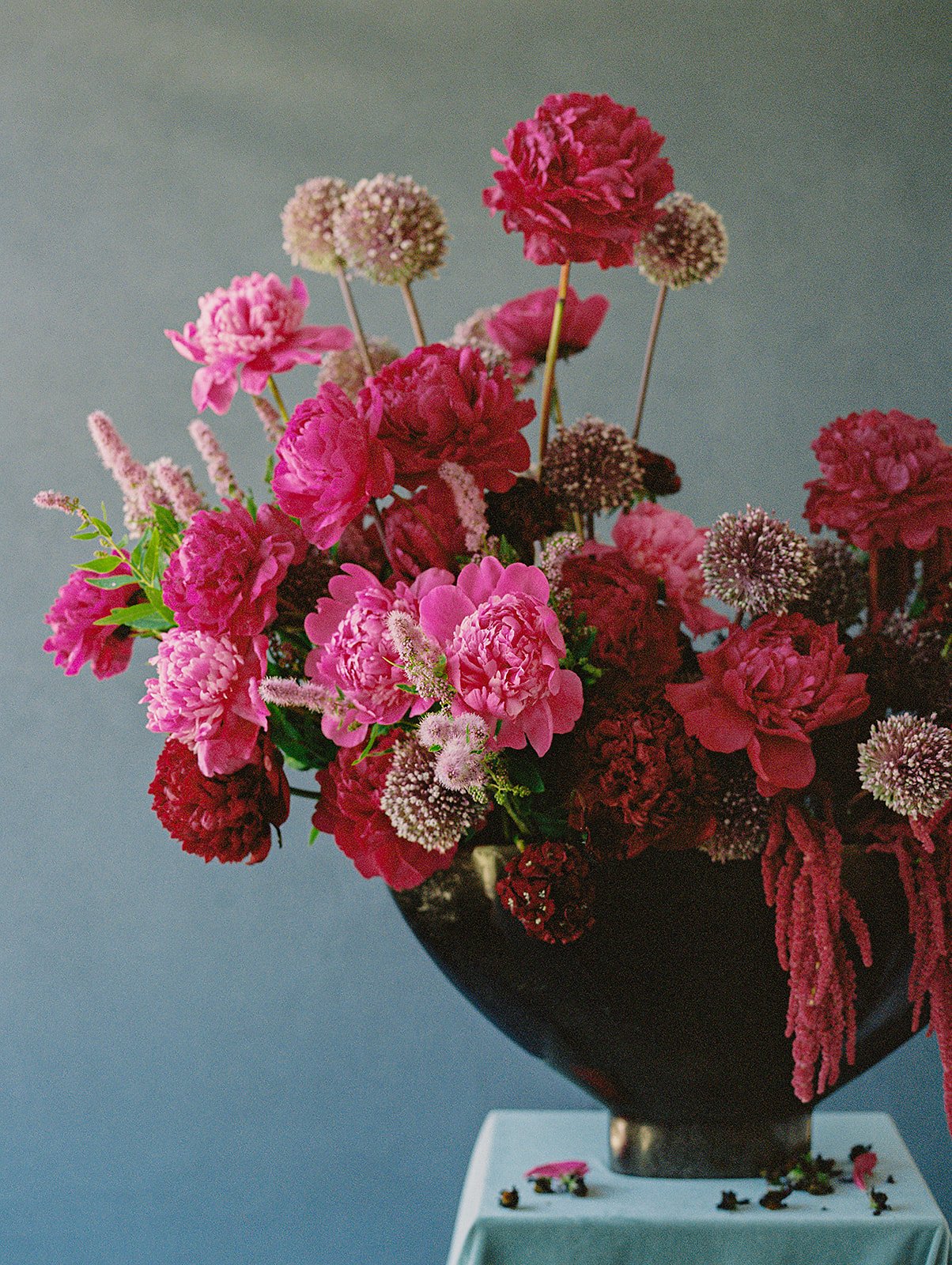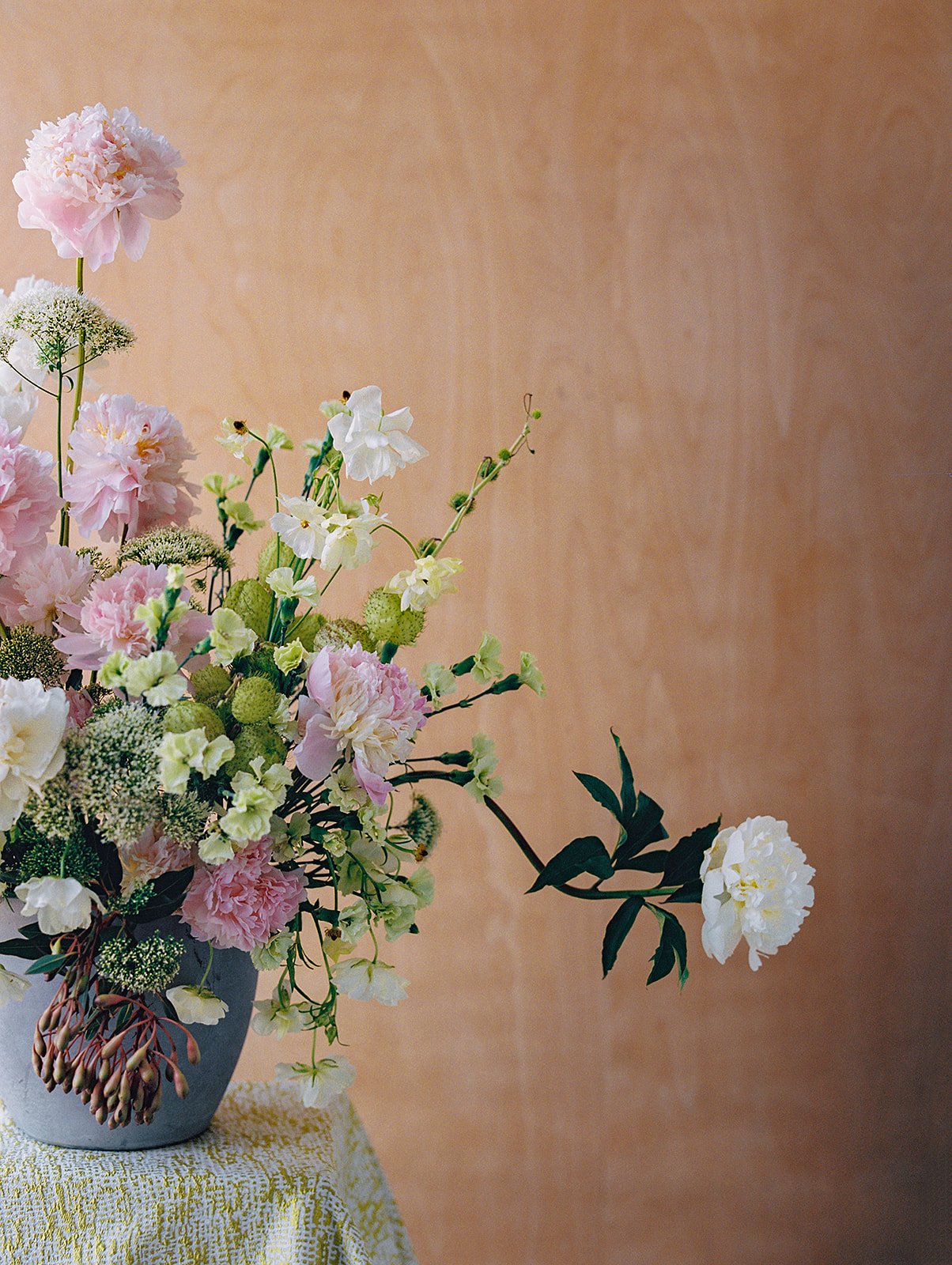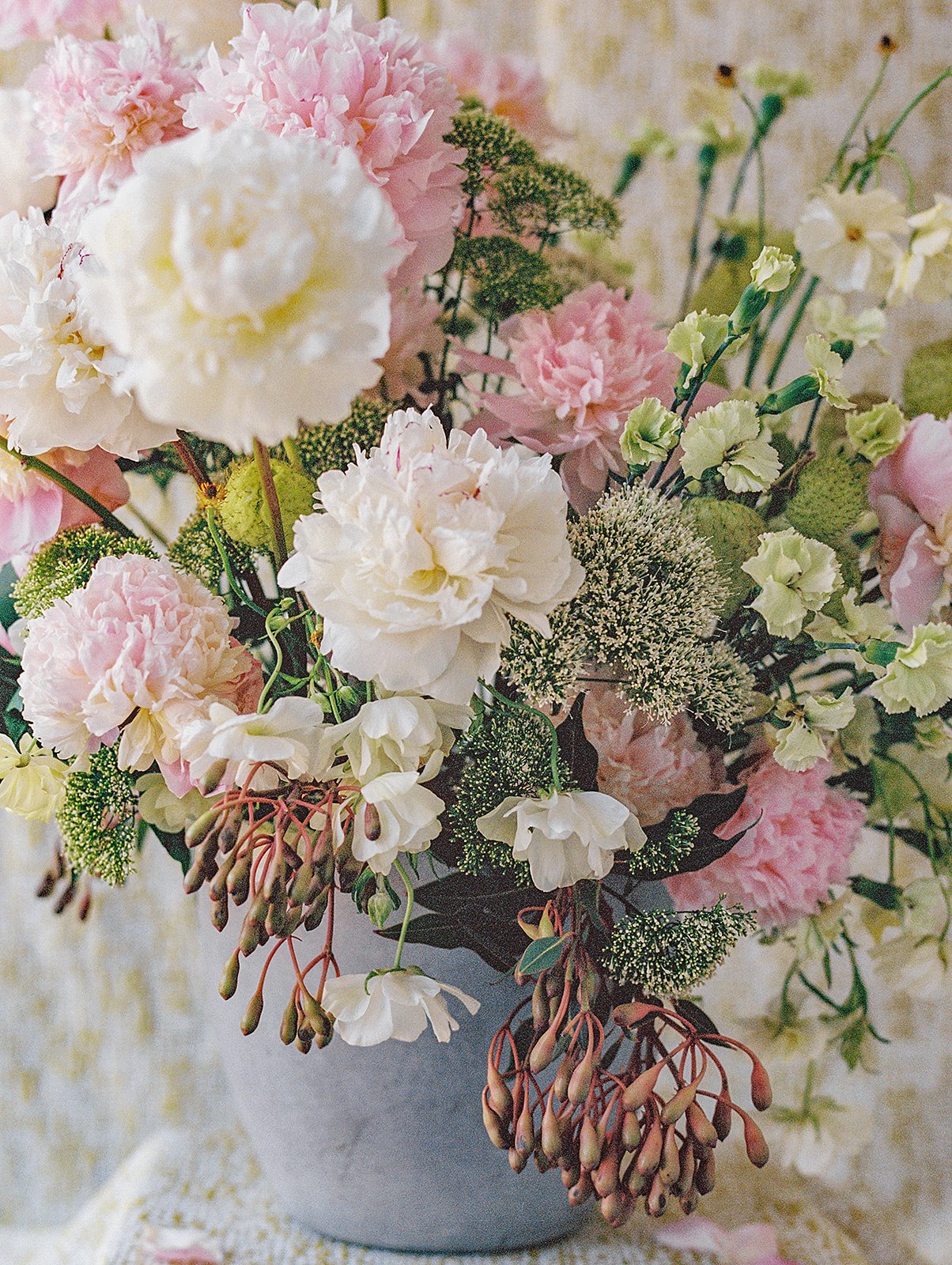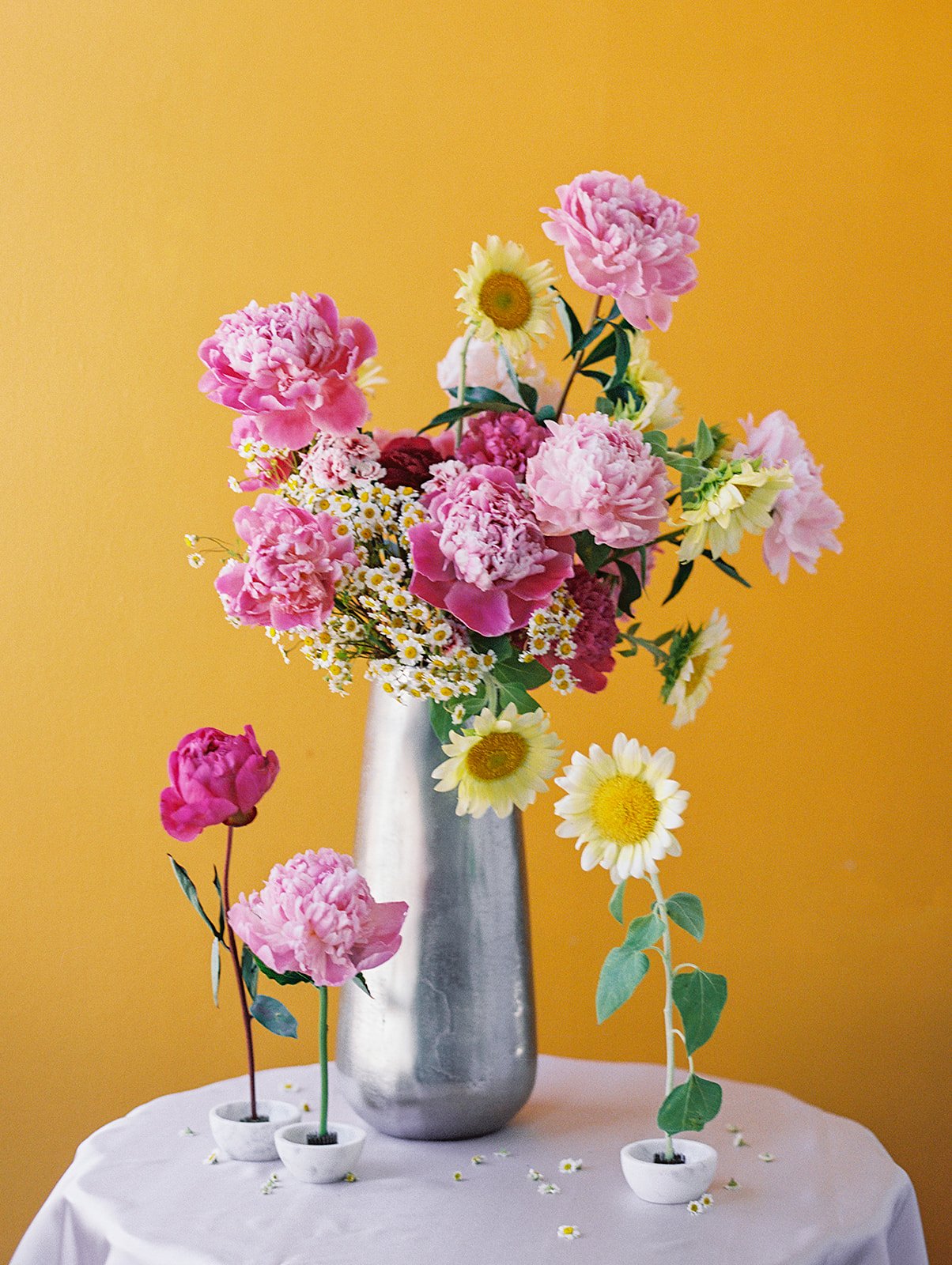
IN THE STUDIO
dans l’atelier
What it is—
Component #1: the newsletter
Think of it as your invitation to coffee. It’s where we talk about what really happens in the studio—the inspiration, the difficulties, and the joys. I want to peel back the curtain on this very full life as a florist, creative, entrepreneur, and mother with young children. In doing so, I hope to entertain your curiosities and encourage you through your struggles and towards your own dreams.
Component #2: this! the blog
This space acts as a folder for things I mention in the emailed newsletters. My goal is to keep the newsletter short and sweet. You can simply read the letter and be done, or delve deeper into a topic by clicking a link to a longer article or a more thorough gallery of images. This is where those additional musings and images will live.

Enter the atelier
Enter your name and email below for a regular peek into the studio or continue scrolling to view the latest news and musings BUT only the emails give you the whole picture.
Autumn Still Life with Local Flowers
MUM? Boring. Basic. Budget—three Bs that are the death of good design. What a fantastic challenge, I thought to myself.
Back in November 2023, at the very end of the local growing season, I collaborated with Monika, owner of the local flower farm Scratch House, to create a few arrangements that would showcase her beautiful flowers. Mums are the common closer when it comes to local farms. Usually the mums are the crop that finishes out the growing season, the flower in bloom when the field is hit by the first frost.
Mums? Meh.
I made sure to hook you with a photo before saying the word “mum” because NO ONE gets excited about mums. They are truly one of the most boring flowers and it’s really our own fault for encouraging horticulturists to keep them so mundane because every fall, we all go out and buy thousands of those perfectly spherical mounds of orange and yellow to go on our porches and in our pumpkin displays.
Mums are not naturally shaped that way.
Heirloom Mums - not your porch mum
At Scratch House Flower, Monika grows a variety of heirloom mums, mums that have a lengthier and purer history, long spidery stems, whimsical formations, larger centers, and a variety of petal shapes and colors. She, along with a rising of other farms, is on a mission to bring these beautiful flowers back into the light, to increase their notoriety, and to establish them as an American grown crop.
MUM? Boring. Basic. Budget—three Bs that are the death of good design. What a fantastic challenge, I thought to myself.
How would I arrange and change this flower into a fairytale princess of blooms?
How could I help people see these flowers in an inspirational light?
To make matters even more difficult, Monika informed me that almost all the flowers available would be orange.
I do not like orange.
And there would be orange marigolds.
What a fabulous design challenge to try to create something you love out of pieces that don’t excite you.
For the Marigolds
The marigolds were so incredible, I had to do an arrangement that showed off their long, bushy stems. Apparently the first crop is typically extra dreamy like this. Oh the things we learn when working directly with the grower!
In some cultures, marigolds are symbolically incorporated into the wedding ceremony design with florists stringing the fluffy blooms together and draping them over the primary ceremony structure (“mandap” in Indian weddings). In light of that, I wired a few of the marigolds together to drape down the front of the arrangement.
For the Heirloom Mums
For the heirloom mums, I wanted to do a design that clustered them in a way that both referenced and rejected the porch mum while drawing attention to its superior qualities (interesting petals, nuanced color, lengthy and curvy stems).
Orange was clearly the dominant color of the day but instead of trying to hide it with another strong color, I partnered the flowers with similarly textured ingredients but more neutral colors. I let the orange of the marigolds shine and tried to draw out more of the pinks in the heirloom mums with some pink toned neutrals. We even experimented with a blush linen.
The photographer Jen Symes is the other hero in this collaboration because our shoot fell on dim, cloudy day yet she successfully transcribing these heavily saturated blooms onto film without feeling garish.
Big thanks also to Nuage Designs, who continues to partner with me in this seasonal still life series. They provided the beautiful linens for the vessels to sit on and we experimented using some of them as backdrops. The quality was fantastic.
If you’re interested in knowing more about the process behind planning a project like this, I go into greater detail on a previous still life project post [read here].
Winter still life in the works and coming soon!
^^^
This arrangement was just for fun using ingredients foraged from around our home and garden. That’s in part what this series is about anyway; playing and finding unexpected joy in the freestyle design. Can you believe the variety in fall colors I managed to find just in our yard?!
Behind the Scenes
I snapped a few images with my phone of the mechanics behind the heirloom mum piece. The base was composed of an intertwining of acorn covered branches which held very steady inside of this particular vessel. I rigged two areas of the branches with small foam cages for that bunched look that I wanted for the false willow (fluffy white stuff) and the upper mum cluster.
The lower middle image shows you the beginnings of the marigold piece for which I experimented with some elevation and base clustering with more heirloom mums.
Sometimes it only looks pretty at the end ;)
Still Life with Alaska Peonies
It’s only two months out of the year that you get to work with beauties like these so if you don’t have a wedding in July-August, you have to make up your own reason to get your hands on Alaska’s peonies.
Peek into my process of putting together a simple studio shoot—
Alaska has peonies?
When I was 22 years old and living in Anchorage AK, my life began to change. I learned of a very special flower called the Peony. Alaska’s endless summer days and fertile farming soil produce perhaps the largest blooms and the most saturated colors of peonies in the world. I had never seen anything like it.
As I journeyed deeper into floristry, I realized that the growing season for these flowers is rather unique. Alaska’s peonies are available to florists during the months of July and August whereas peonies are traditionally considered available for florists only in the spring. The availability of these flowers is why I so love summer weddings.
Summertime collaboration
This summer, without a wedding on my calendar, I had to find another way to get my hands on these incredible blooms from my friends at the Alaska Peony Cooperative. The APC is a not-for-profit marketing and supply cooperative that facilitates the sale of premium Alaska-grown peonies while working to empower farmer-members through education and resource sharing. Alaska’s endless summer days and fertile farming soil produce perhaps the largest blooms and the most saturated colors of peonies in the world. I have never seen anything like it. In collaboration with the cooperative, the talented photographer Jennefer Wilson, and luxury linen company Nuage Designs, I planned a still life studio session to feature these incredible blooms.
The process of creative collaboration
Typically, my audience—if that’s what you can call the 15 people who make it through the algorithm jungle to my posts and my family members—sees only the final product of my events and projects; perfectly edited images like these:
In this post, I want to share with you what the process looks like from idea, to paper, to physical reality.
Step 1: the vision
Establish the “Why”
I had a bit of a lull in weddings so I needed to find other ways to practice floral design and to keep my creative juices flowing. I also didn’t want the Alaska peony season to pass me by and needed to create a reason to create with them apart from client work.
Developing the Vision
I began to envision an unfussy studio session with opportunities for creative experimentation. Always careful not to find inspiration directly from other florists, for this particular project I felt drawn towards the still life paintings of the old masters, the decadent color, dramatic light, and passage of time (image right).
Step 2: enlisting the collaborators
Money is the most sure way to ensure enthusiastic participants. But because this was not a paid gig, I did not have a budget to pay my fellow artists. So, I resolved to spend as little as possible without jeopardizing the quality of the end result. I made a list of my preferred collaborators then relied on my relationships with them, my previous portfolio, and a vision board (left) to arouse equal enthusiasm in my associates.
Vision Board
It’s not fair to ask someone to blindly share their resources with me. They need to know what value I am bringing to their life or to their work. Moreover, a visual description of my idea allows my fellow collaborators to lean into their specialties. They may be able to recommend a product I didn’t see online or advise me towards a method I didn’t know about. I’m a visionary, but I’m a florist, not a trained photographer, not a studio manager, not a peony grower, not a textile specialist.
The vision board allowed the other experts to collaborate during the planning phase so that the project was as beneficial for them as possible. Allowing input like this always creates a better final product. Everyone is more excited, more prepared, and more invested.
Relational Clout
Not to overwhelm you with pressure and shallow motivation for kindness, but you don’t know who will end up being a resource for a future want or need. I’m going to make a quick list of all involved in this project and how I came about finding them and working with them. I think it’s very interesting to see the range of connections and it may help you to think more creatively about your next project.
Alaska Peony Cooperative (the peonies): I became very close with a peony farmer in 2012. She later connected me with the cooperative’s sales manager in 2018/2019. We have had an electronically personal relationship ever since. She’s the best.
American Agro Products and Fleurametz (wholesalers—the other flowers): I love my reps there but they were not interested in donating flowers so I actually had to buy these for the project. Additional flowers were necessary to round out the design although the chocolate cosmos withered before I could use it.
Jennefer Wilson (the photographer): I needed someone who was good, like really good, with translating color from reality to imagery. The darker peonies especially are so saturated, it takes a particularly talented photographer to accurately read the color. I knew if we got the color wrong, then the peony cooperative would not be able to use the images which was the bulk of their motivation for participating.
Jennefer and I are members of the same business group and she works closely with a photographer whose work is well known for being full of color. So even though we had not met before, we shared connections and ambitions. I was delighted that she said yes! I always feel so appreciative towards talented photographers who want to collaborate because full price is VERY expensive (though worth every penny). I did reimburse her for the cost of the film and its development.TX Studio (location where we photographed): I searched for a studio in the Dallas and decided on this space. I did not have a prior relationship with them so I paid full price for the use of the studio. They did kindly extend our hours when we realized we needed more time and when I needed a studio space for our family photos, we used that same space again.
Nuage Designs (the linens): I met the Director of Sales at an industry event in North Carolina. After that event, she connected me with the Texas rep. When I reached out about my desire to do a still life series, starting with these peonies, she was happy to participate so long as I paid for shipping. Shipping is shockingly expensive but still not as expensive as paying full price for these luxurious linens. You can’t have it all.
Childcare: With the project taking place in the middle of the summer, I could not have done this without my husband and my mom keeping up with the kids for the day. Be nice to your family. You need them.
Once I had the vision recorded and the creative team established, the rest of the details (supplies, schedule, childcare, snacks, followup plan) fell into place.
Step 3: the day in the studio
I created about 85% of the first two arrangements the day before the shoot in my parents’ house. I took all of the remaining product and extra materials with me to the studio. After the photographer and I discussed backdrops and looked through the linens, I finished out the first piece while Jennefer finished the setup. I always find it inspiring and invigorating to finish a design in the space it was created for. The third piece with the pink peonies and the locally grown sunflowers was Barbie inspired and I made it very quickly onsite. It was such a joy to work alongside such a talented photographer. We were able to bounce ideas off of each other in the moment and to make adjustments as we went along.
The day in the studio was fast and furious. We had FOUR HOURS in the studio yet the last 30 minutes was a complete rush. I was so surprised. We probably could have spent the entire day in there. That is the difficulty of being an artist in any medium: knowing when to stop. Constraints of any kind, especially time, often add to the creativity in unexpected ways plus it’s a good exercise to work under a time constraint.
Comment below if you enjoyed this look into the studio! What did you like? What do you want to see more of?
Bisous.
Spring Flowers Part III: the redbud trees
As the virus spread to the U.S., so did spring, headless of the fact that the rest of the world was coming to an economic and social halt. As doors began to close, I became increasingly inspired by the bliss of the spring flowers opening happily around us. I wanted to capture the inspiration before it was gone.
Statement of Purpose
As the virus spread to the U.S., so did spring, heedless of the fact that the rest of the world was coming to an economic and social halt. As doors began to close, I became increasingly inspired by the bliss of the spring flowers opening happily around us. I wanted to capture the inspiration before it was gone. Today, I want to give joy to those of you who may have been shut inside their urban home or downtown apartment as the created world rejoiced into color and fragrance.
For those of you who missed spring this year, here is the third and final post in a series of three spring inspired shoots. To see PART I with the whimsical daffodils and accompanying poem I Wandered Lonely As a Cloud, click HERE. To see PART II featuring the romantic cherry blossoms and accompanying poem by Frost, click HERE.
Lines Written in Early Spring
By William Wordsworth
I heard a thousand blended notes,While in a grove I sate reclined,In that sweet mood when pleasant thoughtsBring sad thoughts to the mind.
To her fair works did Nature linkThe human soul that through me ran;And much it grieved my heart to thinkWhat man has made of man.
Through primrose tufts, in that green bower,The periwinkle trailed its wreaths;And ’tis my faith that every flowerEnjoys the air it breathes.
The birds around me hopped and played,Their thoughts I cannot measure:—But the least motion which they madeIt seemed a thrill of pleasure.
The budding twigs spread out their fan,To catch the breezy air;And I must think, do all I can,That there was pleasure there.
If this belief from heaven be sent,If such be Nature’s holy plan,Have I not reason to lamentWhat man has made of man?
wearable flowers
Special thanks to Abigail Lewis Photography for partnering with me on this project.





